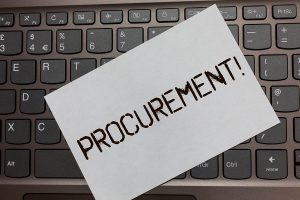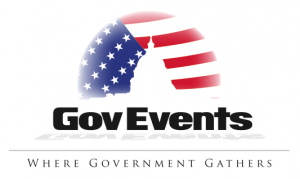05/20/2024 - SANS Leadership & Cloud Security - Cr...
05/20/2024 - Cyber Security Training at SANS Attac...
05/21/2024 - Qualys Public Sector Cyber Risk Conference
05/21/2024 - Google Workspace California Webinar Series
05/21/2024 - From Data to Decisions in Tableau Pul...
05/21/2024 - Red Hat Training Webinar Series
05/21/2024 - Microsoft Office Offensive Tradecraft
05/21/2024 - VETS 2 DPA Training
05/21/2024 - Migrate, Optimize, and Modernize with...
05/21/2024 - Modernizing Security: Simplifying Zer...
05/21/2024 - DoD: Embracing Continuous Monitoring
05/21/2024 - Operational Threat Intelligence Workshop
05/21/2024 - Qualys Public Sector Cyber Risk Conference
05/22/2024 - Defense Talks
05/22/2024 - SecureWorld Atlanta
05/22/2024 - INTERFACE Honolulu 2024
05/22/2024 - Key Insights From the 2024 Cyberthrea...
05/22/2024 - Workday Federal Forum
05/22/2024 - Leveraging Splunk Cloud at DOE
05/22/2024 - Charting Paths Forward: A Recap of Ta...
05/22/2024 - Using Microsegmentation to Ease the W...
05/22/2024 - AI Progress 2024: Challenges and Oppo...
05/22/2024 - Digital Intelligence: Mission Critica...
05/23/2024 - Tampa Cybersecurity Conference
05/23/2024 - Meeting Small Business Goals and Acce...
05/23/2024 - Improving Public Sector CX
05/23/2024 - Delivering Decision Advantage
05/23/2024 - Tungsten Automation and Optima Webinar
05/23/2024 - Navigating Regulatory Frameworks for...
05/23/2024 - Maximizing IT Services for Government...
05/23/2024 - Tableau Enablement Series Part 5: Sec...
05/23/2024 - Out of Sight Out of Control: Asset In...
05/28/2024 - The Evolution of ATO and Workflows th...
05/28/2024 - Identiverse 2024
05/29/2024 - SANS Stay Sharp: May 2024
05/29/2024 - Alliant 2 DPA Training
05/29/2024 - OASIS+ DPA Training
05/29/2024 - Unleashing Data Insights: MySQL HeatW...
05/29/2024 - ChatGPT Use Cases for State & Local G...
05/30/2024 - SecureWorld Miami
05/30/2024 - ATARC's Federal Quantum Summit
05/30/2024 - Zero Trust Training | CCZT
05/30/2024 - Harnessing the Full Potential of Cont...
05/30/2024 - Federal Strategic Sourcing Initiative...
05/30/2024 - Navigating the Future of Procurement...
05/30/2024 - AI and State-Sponsored Espionage - A...
05/30/2024 - Unlocking Efficiency: Harnessing the...
05/30/2024 - The Anatomy and Drivers of Peak Perfo...
05/30/2024 - CTO Sessions: Thales TCT + Imperva: T...
05/31/2024 - To Succeed with Zero Trust & AI, Look...
06/03/2024 - SANS Miami 2024
06/04/2024 - Techno Security & Digital Forensics C...
06/04/2024 - Leveraging Odaseva for Comprehensive...
06/04/2024 - Google Cloud & BlueVector AI Webinar
06/04/2024 - Migrating to the Tableau Cloud
06/05/2024 - ElevateIT-Dallas Technology Summit
06/05/2024 - FedTalks 2024
06/05/2024 - AM AFFIRMation: Leveraging Cyber, Dat...
06/05/2024 - Introduction to F5 BIG-IP Next
06/05/2024 - Modernizing Big Data Platforms
06/05/2024 - Empowering Virtual Training in Govern...
06/05/2024 - Tidelift is Hosting Upstream: A One D...
06/05/2024 - Prioritizing Mission Delivery ...
06/06/2024 - Kansas City Cybersecurity Conference
06/06/2024 - Salt Lake City Cyber Security Summit
06/06/2024 - SecureWorld Chicago
06/06/2024 - Hybrid Cloud Best Practices
06/06/2024 - Health Innovation Summit 2024
06/06/2024 - INTERFACE Kansas City 2024
06/06/2024 - Government Customer Experience ...
06/06/2024 - AWS Kentucky Lunch and Learn: Empower...
06/06/2024 - Babel Street GEOINT Webinar
06/06/2024 - Implementing Zero Trust Controls and...
06/06/2024 - Phishing-Resistant Solutions: Modern...
06/06/2024 - Embracing A Data-Driven Approach To C...
06/06/2024 - Unlocking the Potential of Proofpoint...
06/06/2024 - Protecting Critical Infrastructure Re...
06/06/2024 - Adapting to Change: Zero Trust Integr...
06/06/2024 - From Silos to Synergy: Bringing Highe...
06/07/2024 - Implementing AI Provides Short ...
06/10/2024 - CISSP | Official ISC2 Training Week
06/10/2024 - Certificate of Cloud Security Knowled...
06/10/2024 - GitLab Training: Security Essentials...
06/11/2024 - The GAO Green Book Compliance Academy
06/11/2024 - Data Governance Demystified: From Cha...
06/11/2024 - Generative AI: Uses and Abuses in Cyb...
06/12/2024 - Tableau Server to Cloud: Lift ...
06/12/2024 - Alliant 2 DPA Training
06/12/2024 - Trellis Data's Secure Speech: Secure...
06/12/2024 - Piercing the Near-Peer Cyber Perimete...
06/13/2024 - FAR/DFARS Mid-Year Update 2024
06/13/2024 - ATARC's Federal Open Source Summit
06/13/2024 - Cloud Governance, Risk and Compliance...
06/13/2024 - PSHC Office Hours: CALC+ Pricing Suite
06/13/2024 - Modernizing for Future-Proof Flexibil...
06/13/2024 - Leveraging Tableau Stories and Dashbo...
06/13/2024 - CyberSmart 2024: The More Things Chan...
06/17/2024 - SANS Rocky Mountain Summer 2024
06/18/2024 - Defense One Tech Summit
06/18/2024 - Carahsoft DevSecOps Conference
06/18/2024 - F5 BIG-IP Next - Explore the Next Gen...
06/18/2024 - Leveraging AI for Audio and Video Redaction
06/18/2024 - How AI is Revolutionizing Government...
06/18/2024 - Tackling the Elusive Non-Employee Problem
06/20/2024 - AI & ML in Records Management
06/20/2024 - From Legacy to Leading Edge: Embracin...
06/20/2024 - AI and State-Sponsored Espionage - A...
06/20/2024 - Enabling Secure Data Storage and Shar...
06/21/2024 - INTERFACE Phoenix 2024
06/23/2024 - ISTE Live 2024
06/24/2024 - CCSP | Official ISC2 Training Week
06/24/2024 - Cyber Security Training at SANS San A...
06/25/2024 - Hartford Cyber Security Summit
06/25/2024 - DCAA & DCMA Cost, Pricing, Compliance...
06/25/2024 - Google Workspace California Webinar Series
06/25/2024 - Unlocking the Potential of AI ...
06/26/2024 - Federal Low-Code App Engine Innovatio...
06/26/2024 - Protecting APIs and Sensitive Data
06/27/2024 - Orange County Cybersecurity Conference
06/27/2024 - Maximum ACFR Automation for States, L...
06/27/2024 - Neurodiversity in Cybersecurity Summit 2024
06/27/2024 - Nextgov/FCW Supply Chain Workshop
07/11/2024 - Pittsburgh Cybersecurity Conference
07/11/2024 - INTERFACE Salt Lake City 2024
07/11/2024 - Zero Trust Training | CCZT
07/11/2024 - The ATO and Cloud Security Summit
07/11/2024 - Zoom at the GovForward ATO & Cloud Se...
07/14/2024 - AGA's 2024 Professional Development T...
07/15/2024 - SANSFIRE Washington, DC 2024
07/15/2024 - FLGISA 2024 Annual Conference
07/16/2024 - AI for Government: Opportunities ...
07/18/2024 - Phoenix Cybersecurity Conference
07/18/2024 - Election Security: Protecting the Fou...
07/19/2024 - ElevateIT-Minneapolis Technology Summit
07/19/2024 - ElevateIT-HoustonTechnology Summit
07/22/2024 - CCSP | Official ISC2 Training Week
07/22/2024 - CISSP | Official ISC2 Training Week
07/23/2024 - Google Workspace California Webinar Series
07/24/2024 - SecureWorld AI Virtual Conference
07/25/2024 - Denver Cybersecurity Conference
07/29/2024 - Certificate of Cloud Security Knowled...
07/30/2024 - The GAO Green Book Compliance Academy
07/31/2024 - INTERFACE Montana 2024
08/01/2024 - Cloud Governance, Risk and Compliance...
08/03/2024 - Black Hat USA 2024
08/05/2024 - SANS Nashville 2024
08/06/2024 - 2024 GSA SmartPay Training Forum
08/12/2024 - SANS Chicago 2024
08/12/2024 - CCSP | Official ISC2 Training Week
08/12/2024 - CISSP | Official ISC2 Training Week
08/13/2024 - 2024 Government Financial Management...
08/15/2024 - Salt Lake City Cybersecurity Conference
08/19/2024 - CMMC Level 1 Implementation
08/19/2024 - SANS Virginia Beach 2024
08/22/2024 - Washington D.C. Cybersecurity Conference
08/22/2024 - INTERFACE Boise 2024
08/26/2024 - Zero Trust Architecture (NIST SP 800-207)
08/26/2024 - Certificate of Cloud Security Knowled...
08/28/2024 - ATARC's Federal Law Enforcement IT Summit
09/03/2024 - Protecting Controlled Unclassified In...
09/04/2024 - SANS Network Security Las Vegas 2024
09/05/2024 - Charlotte Cybersecurity Conference
09/09/2024 - Overview of the CMMC Compliance Model
09/09/2024 - CCSP | Official ISC2 Training Week
09/10/2024 - The GAO Green Book Compliance Academy
09/16/2024 - Techno Security & Digital Forensics C...
09/16/2024 - Cyber Security Training at SANS Offen...
09/17/2024 - Using the Yellow Book for the Governm...
09/17/2024 - Systems Security Plan - ( NIST Based SSP)
09/17/2024 - Overview of the NIST Cybersecurity Fr...
09/19/2024 - ITModTalks
09/19/2024 - Des Moines Cybersecurity Conference
09/19/2024 - INTERFACE Albuquerque 2024
09/19/2024 - AGA's 2024 Internal Control &Fraud Pr...
09/23/2024 - Implementing the HIPPA Security Rule...
09/23/2024 - Risk Management Overview (ISO 31000)
09/23/2024 - CISSP | Official ISC2 Training Week
09/23/2024 - Certificate of Cloud Security Knowled...
09/23/2024 - SANS Managing Security Risk 2024
09/25/2024 - Impact of AI on the Cybersecurity Ind...
09/26/2024 - Zero Trust Training | CCZT
09/30/2024 - Managing Information Security (ISO 27001)
09/30/2024 - CMMC Level 1 Implementation
09/30/2024 - Ransomware Risk Management (NIST 8374)
09/30/2024 - CloudSecNext Summit & Training 2024
09/30/2024 - Cyber Security Training at SANS Big E...
10/03/2024 - Columbus Cybersecurity Conference
10/03/2024 - ATARC's Federal Zero Trust Summit
10/07/2024 - Zero Trust Architecture (NIST SP 800-207)
10/07/2024 - CMMC Level 2 Implementation
10/07/2024 - Cyber Security Training at SANS North...
10/10/2024 - Bringing Digital Transformation to Fe...
10/11/2024 - Using Generative AI to Transform the...
10/14/2024 - Cyber Security Training at SANS Dalla...
10/15/2024 - Protecting Controlled Unclassified In...
10/16/2024 - INTERFACE Spokane 2024
10/16/2024 - Join Us to Learn How to Elevate Your...
10/17/2024 - Boston Cybersecurity Conference
10/17/2024 - GAIN 2024: The Premier B2G Marketing...
10/21/2024 - Overview of the CMMC Compliance Model
10/21/2024 - International Telemetering Conference (ITC)
10/21/2024 - NJSBA Workshop '24
10/21/2024 - Cyber Security Training at SANS Rocky...
10/22/2024 - The GAO Green Book Compliance Academy
10/28/2024 - Cyber Security Training at SANS Orlan...
10/28/2024 - Certificate of Cloud Security Knowled...
10/29/2024 - Using the Yellow Book for the Governm...
10/29/2024 - Systems Security Plan - ( NIST Based SSP)
10/29/2024 - Overview of the NIST Cybersecurity Fr...
10/30/2024 - Phoenix Cybersecurity Conference
10/30/2024 - CyberTalks 2024
11/04/2024 - Implementing the HIPPA Security Rule...
11/04/2024 - Risk Management Overview (ISO 31000)
11/07/2024 - INTERFACE Omaha 2024
11/07/2024 - ATARC's Federal Health IT Summit
11/12/2024 - Managing Information Security (ISO 27001)
11/12/2024 - CMMC Level 1 Implementation
11/12/2024 - Ransomware Risk Management (NIST 8374)
11/14/2024 - Nashville Cybersecurity Conference
11/14/2024 - Zero Trust Training | CCZT
11/17/2024 - Cyber Security Training at SANS DFIRC...
11/18/2024 - Cyber Security Training at SANS Golde...
11/19/2024 - Zero Trust Architecture (NIST SP 800-207)
11/19/2024 - CMMC Level 2 Implementation
11/20/2024 - Internal Auditing for the Defense Con...
11/20/2024 - Federal Low-Code App Engine Innovatio...
11/21/2024 - San Diego Cybersecurity Conference
12/02/2024 - CMMC Level 3 Implementation
12/02/2024 - Protecting Controlled Unclassified In...
12/02/2024 - Cyber Security Training at SANS Seatt...
12/04/2024 - Houston Cybersecurity Conference
12/04/2024 - Top Five Cybersecurity Predictions for 2025
12/05/2024 - Cloud Governance, Risk and Compliance...
12/05/2024 - Zero Trust Training | CCZT
12/09/2024 - Overview of the CMMC Compliance Model
12/10/2024 - The GAO Green Book Compliance Academy
12/11/2024 - Atlanta Cybersecurity Conference
12/11/2024 - Federal Low-Code App Engine Innovatio...
12/12/2024 - FAR/DFARS End of Year Review 2024
12/12/2024 - INTERFACE Seattle 2024
12/13/2024 - Cyber Security Training at SANS Cyber...
12/15/2024 - Security and Privacy Controls (NIST S...
12/17/2024 - Using the Yellow Book for the Governm...
12/17/2024 - Systems Security Plan - ( NIST Based SSP)
12/17/2024 - Overview of the NIST Cybersecurity Fr...
12/23/2024 - Implementing the HIPPA Security Rule...
12/23/2024 - Risk Management Overview (ISO 31000)
12/30/2024 - Managing Information Security (ISO 27001)
12/30/2024 - CMMC Level 1 Implementation
12/30/2024 - Ransomware Risk Management (NIST 8374)
 With another Government Fiscal Year ramping up, we're starting with a whole new year of budget and contract opportunities in the government market. As we've written here before, the acquisition and procurement process in government is evolving to adapt to the technologies and services being procured as well as changes in the workforce that supports it.
With another Government Fiscal Year ramping up, we're starting with a whole new year of budget and contract opportunities in the government market. As we've written here before, the acquisition and procurement process in government is evolving to adapt to the technologies and services being procured as well as changes in the workforce that supports it.

 Don't let the title mislead you, today we're not talking about acquiring Agile services (though, that plays a role) but rather about how government is making their procurement process more flexible and dynamic to meet the needs of federal teams and citizens alike. We've
Don't let the title mislead you, today we're not talking about acquiring Agile services (though, that plays a role) but rather about how government is making their procurement process more flexible and dynamic to meet the needs of federal teams and citizens alike. We've 


